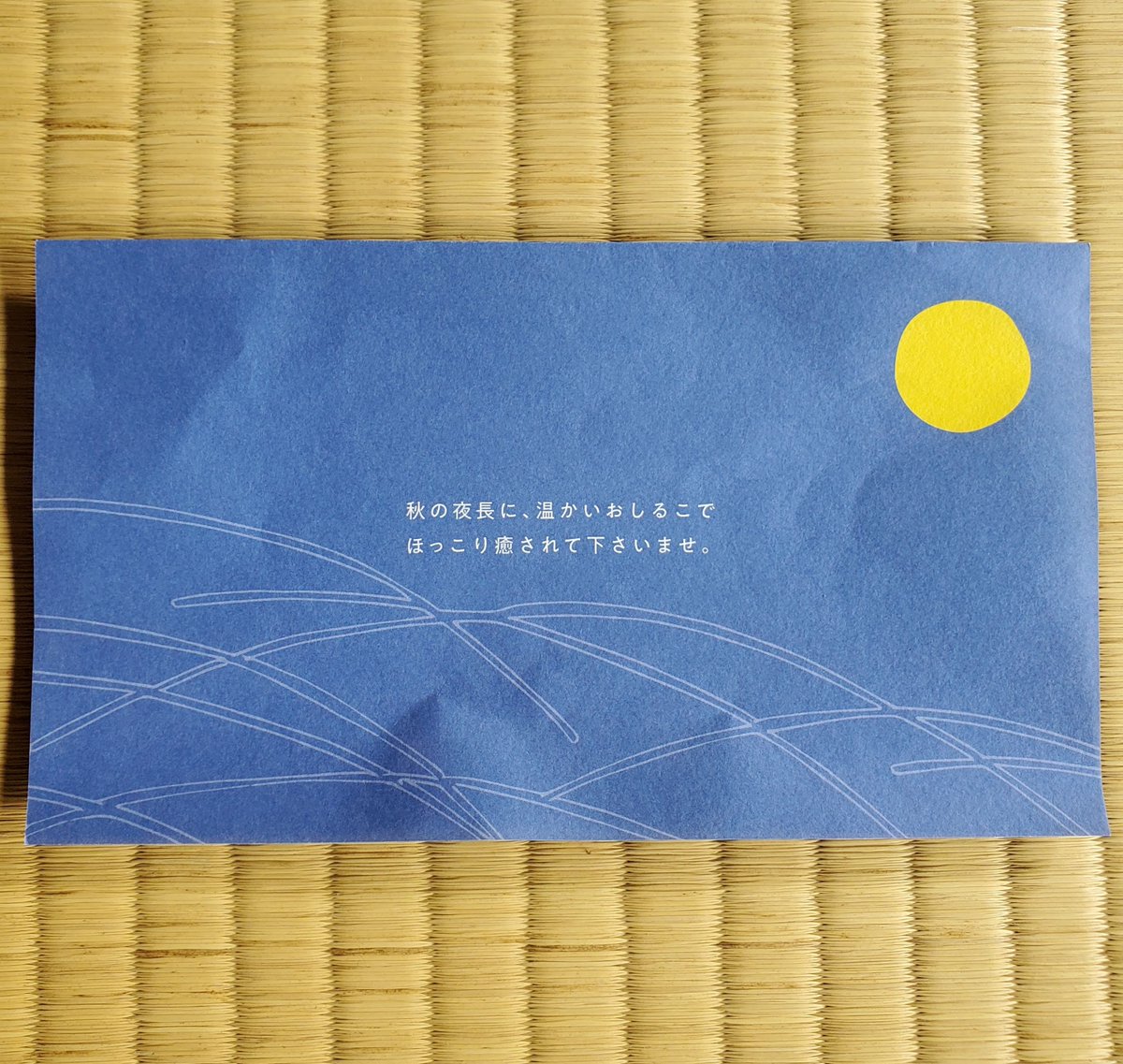
🐰🎑MOON MORSELS🥮🥰
When the Harvest Moon (お月見) and Feast of Chrysanthemums (菊の節句) arrive together, you know plates will be groaning and bellies will be full🙌
one for the dog
one for the crow...
rice cakes
犬の餅烏が餅もつかれけり
-Issa (小林一茶).
Trans. Lanoue.
#京都



When the Harvest Moon (お月見) and Feast of Chrysanthemums (菊の節句) arrive together, you know plates will be groaning and bellies will be full🙌
one for the dog
one for the crow...
rice cakes
犬の餅烏が餅もつかれけり
-Issa (小林一茶).
Trans. Lanoue.
#京都




Nao-san tucks in to Kameya Yoshinaga's (亀屋良長 @yoshimura0303) 'hane-usagi' (はねうさぎ).
Break open the cute moon rabbit and add hot water to create delicious oshiruko (お汁粉), a sweet bean soup.
#お月見 #moonviewing #moonrabbit #月の兎 #wagashi #和菓子 #Kyoto #京都 #お汁粉
Break open the cute moon rabbit and add hot water to create delicious oshiruko (お汁粉), a sweet bean soup.
#お月見 #moonviewing #moonrabbit #月の兎 #wagashi #和菓子 #Kyoto #京都 #お汁粉
Each rabbit comes with a random kohaku (琥珀) moon. The phase of the moon-sweet determines your fortune...a full moon represents the best luck you can have.
Nao-san got...🥁...a full moon!🎉
A thread all about kohaku and other types of sweets⬇️
#亀屋良長



Nao-san got...🥁...a full moon!🎉
A thread all about kohaku and other types of sweets⬇️
https://twitter.com/camelliakyoto/status/1547098734084833281?s=20&t=rVkwbOWPnhDYac4-S0qvnQ
#亀屋良長




We are well in to September, but Kyōto's afternoons are still scorching. Even statues are in need of a little refreshment.
Worshippers pour water on Mizukake Fudō-san (水掛不動) as a form of prayer. He sits on an orange rock known as "Kankō's Bench" (菅公腰掛石).
#仁和寺 #Kyoto
Worshippers pour water on Mizukake Fudō-san (水掛不動) as a form of prayer. He sits on an orange rock known as "Kankō's Bench" (菅公腰掛石).
#仁和寺 #Kyoto
Kankō is another name for Sugawara-no-Michizane (菅原 道真 845-903). Shortly before leaving for his demoted post at Dazaifu, Michizane visited Ninna-ji to bid his friend retired Emperor Uda (宇多天皇) farewell. As the emperor was busy reading sutras, he waited on the rock.
#京都



#京都




🌺THE QUEST FOR ETERNAL YOUTH💦
Chrysanthemum dew was believed to have age-reversing qualities, and from the end of the 9thC the aristocracy would drape floss-silk on the flowers before Chōyō-no-Sekku. The next morning the damp and fragrant cloth was gently wiped on faces.
#Japan



Chrysanthemum dew was believed to have age-reversing qualities, and from the end of the 9thC the aristocracy would drape floss-silk on the flowers before Chōyō-no-Sekku. The next morning the damp and fragrant cloth was gently wiped on faces.
#Japan




Many sweets around the time of 'The Feast of Chrysanthemums' (菊の節句) are named after the silk floss used to collect dew from the flowers.
Suetomi's (末富) 'kisewata' (着せ綿 'cotton covering') is one such sweet, depicting cotton draped on the head of a pink chrysanthemum.



Suetomi's (末富) 'kisewata' (着せ綿 'cotton covering') is one such sweet, depicting cotton draped on the head of a pink chrysanthemum.




Senbon Tamajuken (千本玉壽軒) makes use of kudzu to give their 'kisewata' (着せ綿) a glistening beauty, highlighting the dew so coveted by the folk at court.
Nao-san paired the sweet with a crane tea bowl. Like chrysanthemums, cranes have long been a symbol of longevity.
#Japan



Nao-san paired the sweet with a crane tea bowl. Like chrysanthemums, cranes have long been a symbol of longevity.
#Japan




As the day draws on the (already) waxing moon makes its first appearance, and so a small celebration with Suetomi's (末富) 'getto' (月兎). The yellow lower layer, made from Japanese yam, represents the full moon.
Potatoes & yams are important symbols of harvest time and autumn🍠



Potatoes & yams are important symbols of harvest time and autumn🍠




• • •
Missing some Tweet in this thread? You can try to
force a refresh



































































